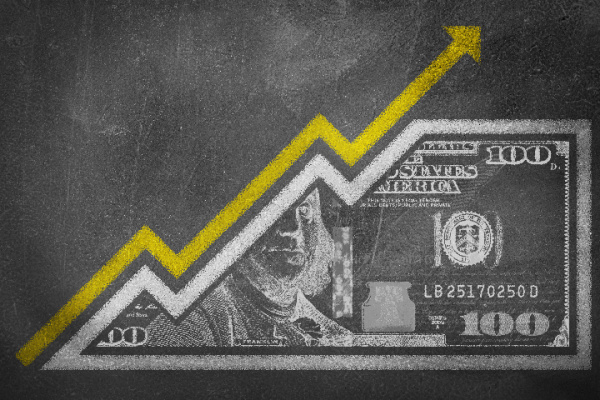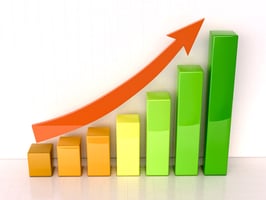Following up on comments made by Agriculture Secretary Tom Vilsack in a recent Senate hearing, USDA...
Five Macro-Economic Factors to Watch in 2022

For the last two years, economists Brent Gloy and David Widmar have carved out time each spring to summarize a few key macroeconomic factors to watch. In 2020, they wondered about the massive economic contraction as the COVID virus shut down the economy. Last year, Gloy and Widmar were optimistic about the vaccine rollout and the hopes for an economic recovery. For this year’s list, the U.S. economy is facing higher prices and global conflict.
The 2022 macroeconomic watchlist highlights five key issues and discusses some of the implications for agriculture.
Inflation
You don’t have to search very far to see evidence of inflation. In fact, Google search-engine data reveal people are “searching” for inflation more than ever.
Last June, the duo wrote a short memo (What We Are Thinking About: On Inflation) about the issue, and a few points are worth sharing:
“Talk of inflation immediately summons thoughts of the 1970s and the run of high inflation experienced during that decade. At the extremes, the annual measure of inflation (Personal Consumption Expenditures price index) reached 10.4% in 1974 and 10.7% in 1980. Unfortunately, that’s probably where memories and “lessons learned” from inflation during the 1970s end, as most would point to the two peaks in inflation as the “problem” of the 1970s.
However, the damage inflicted by inflation during this period was more than just the peaks. The lowest inflation observed during the decade was 3.4% (1972), while the average from 1970 to 1980 was 6.4%. If you were to cherry-pick the data, inflation averaged 8.0% for the ten years that spanned 1973 to 1982. These are very high levels of inflation to sustain for a decade. According to Gloy and Widmar, it’s the decade-worth of strong inflation that created the majority of the problems, not the two years when inflation peaked at 10%.
For 2021, they are using three questions to help filter through the noise and narrative circulated about inflation: 1. How soon? 2. How high? 3. For how long?”
Shortly after writing the June memo, data for summer 2021 revealed inflation had clearly arrived. However, the other two questions are still unanswered and are very relevant to 2022. While the Fed, citing confusion, has stepped away from using the word “transient,” the question remains as to how long inflation will prevail.
Perhaps the biggest implication for agriculture is how aggressively the Fed needs to respond. If short-term issues – such as supply chain woes – clear up and reduce inflationary pressures, the Fed can be less aggressive with interest rate hikes. Alternatively, if inflation continues higher or remains stubbornly above 5%, the pressure on the Fed to act aggressively will increase.
Energy
From gasoline to crude oil and natural gas, energy prices were already trending higher before Russia’s invasion of Ukraine sent prices soaring. On March 14, the average price of gasoline in the U.S. was a record $4.32 per gallon. Furthermore, gasoline prices jumped $0.71 per gallon in two weeks (February 28 – March 14) and have increased $1.03 per gallon (or 32%) since the start of the year.
Where will energy prices go in 2022? Before making a crystal ball prediction, keep in mind crude oil was traded at negative prices two years ago. A wide range of possible future outcomes exists.
Interest Rates
Gloy and Widmar are frequently asked about interest rates and frame the uncertainty into three considerations: 1) how soon will the Fed raise the Fed Funds Target rate, 2) how significantly might the Fed raise the Fed Funds Target rate, and 3) what will happen with longer-term rates.
The first consideration was revealed in March when the Fed raised the target rate and signaled additional rate hikes were likely for 2022.
It’s easy to hyperfocus on the Fed’s next decision regarding short-term rates. For agriculture, the broader debt market and long-term rate are arguably more important. While the Fed just recently raised short-term rates, longer-term rates have been trending higher for a while. For example, 10-year Treasuries hit a rate of nearly 2.5%, up from the August 2020 low of 0.52%. In many cases, farm loans are more sensitive to the longer-term debt market than the Fed adjustment to short-term rates.
The Deficit
In 2013, the farm bill expired under Congress’ deadlock and it failed to pass a new bill. Eventually, a one-year extension of the 2008 Farm Bill gave lawmakers another year to work on what would become the 2014 Farm Bill. What happened? This was a period when policymakers were focused on tackling the deficit, limiting spending, and sequestration following the 2008 Financial Crisis.
The deficit spending in 2020 was equal to 15% of gross domestic product (GDP), falling between the Great Recession and WWII extremes. In 2021, the deficit slightly improved to 12%. It’s also worth noting the deficit began trending unfavorably back in 2016.
It’s not clear how policymakers will approach the situation in the coming months or years, but the challenges faced while trying to pass the farm bill nearly a decade ago could resurface at some point.
Global Supply Chains
This last category is admittedly a bit of a catch-all, but several global uncertainties will likely weigh on the U.S. macroeconomy. From ships queued at ports and more COVID shutdowns in China to sanctions and global trade, it’s hard to understate the degree of uncertainty. Furthermore, the magnitude of potential outcomes associated with these uncertainties is also significant.
Specific to agriculture, the key areas to watch will be corn and wheat exports and fertilizer prices, and trade.
Wrapping It Up
It seems like every conversation in 2022 makes its way back to the macroeconomy. What makes these macroeconomic factors so challenging is the outcomes are very significant and have a way of distorting what we previously thought was a reasonable range of possible outcomes. Second, even when we know there will be impacts, it will take significant time to begin to actually see or quantify the impacts in the data.
For example, consider the wheat situation. The range of possible prices of wheat for 2022 and 2023 has greatly expanded since Russia invaded Ukraine. Furthermore, it will be several months before the impact on Ukraine production, Ukraine exports, Russian trade, and U.S. exports will be known.
Editor’s Take:
It is difficult to argue with the five macro-economic factors discussed by Gloy and Widmar in this article. Any single factor could have a major impact on our country’s overall performance. Tack on the uncertainty caused by Russia’s unprovoked attack on the Ukraine with domestic labor shortages and the crystal ball becomes extremely cloudy. The stock market has been very volatile so far in 2022 causing some to pull back on investments. Agriculture is the one sector that seems to be very solid financially. Farmers and ranchers have solid balance sheets and are considered very credit-worthy. So, take from this that the general economy is facing several headwinds. However, agriculture remains a great place to focus on in 2022. Use AgPack to your advantage, especially in conjunction with our new AgTruckTrader.com – a powerful combination to attract farmers and ranchers to your CAD store(s)








